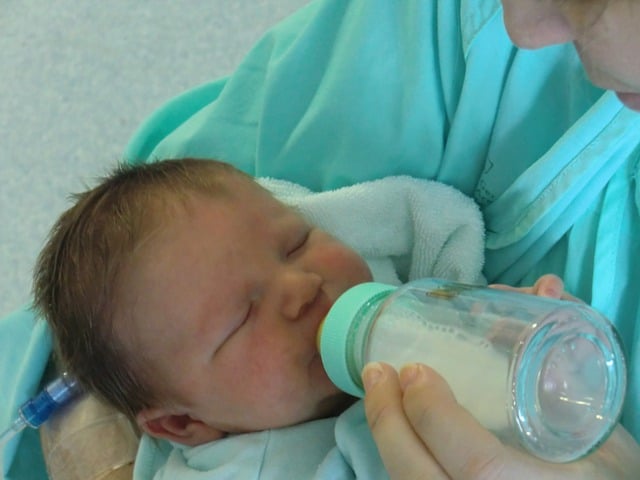
A baby bottle consists of a bottle with a nipple.
The term baby bottle , which has its etymological origin in the French language, refers to a container equipped with a nipple that is used for artificial breastfeeding . Depending on the country, this utensil is also called a baby bottle , teapot , baby bottle or pacifier , all concepts accepted by the Royal Spanish Academy ( RAE ) in its dictionary.
It is important to mention that the idea of breastfeeding can be used to name the nutritional system that is based exclusively on milk , as is recommended for children under six months. When a mother cannot or does not wish to breastfeed her child, artificial breastfeeding is resorted to.
Features of a baby bottle
Baby bottles are objects that allow the development of artificial breastfeeding, either as the only form of feeding or as a complement to breastfeeding. The baby , in this way, accesses milk through the bottle and not the breast.
The bottle consists of a plastic or glass bottle where the milk is placed. Such milk can be breast milk (that is, expressed from the mother's breast) or formula (an artificial substitute, usually made from cow's milk and other ingredients). The little one sucks the milk from the bottle through a teat that is shaped like a nipple .
It should be noted that doctors recommend that breastfeeding be the exclusive food for children up to six months and then be combined with others up to two years. This is because breastfeeding strengthens the baby's immune system and promotes the emotional bond between mother and child.

Bottles make artificial breastfeeding easier.
Historical tour
There are prehistoric antecedents of objects similar to the baby bottle, made with clay and animal horns. However, it was only in the 19th century that bottles similar to those of today began to be produced, capable of being used without putting the baby at risk.
Primitive baby bottles tended to accumulate microbes since they were very difficult to clean. In this way, its use usually caused infections .
A key step in the evolution of baby bottles came when the bottles became heat resistant, which allowed them to be sterilized at home. This advance was achieved in the 1960s .
Types of baby bottles
Today it is possible to find numerous types of bottles in pharmacies, supermarkets and baby product stores. We can differentiate baby bottles according to their capacity (100 ml, 250 ml, etc.) or the material of the bottle (glass, plastic) and the nipple (silicone, latex), for example .
It is also common to distinguish between newborn bottles , wide-mouth bottles and transitional bottles . Features vary depending on the size, grip of the container, and the amount of milk passing through the nipple.
The importance of cleaning
Whichever bottle is chosen, cleanliness is very important. If germs build up in the bottle or nipple, the milk can become contaminated.
In the case of children under six months, it is usually recommended to sterilize the bottle before each feeding. This process is carried out by boiling the bottle or using a sterilizer.
In all cases, after use, the bottle should be washed with soap and water , making sure that no traces of milk remain in any nooks and crannies. For this you have to disassemble it and clean each part. Finally you have to air dry it.
